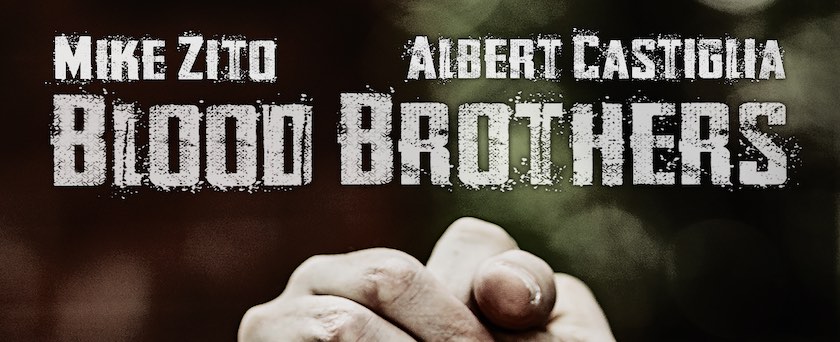Blues Rock
Blues Rock
Blues Rock is the meeting point of two iconic genres: blues and rock & roll. Emerging in the 1950s and 1960s, blues rock has gone on to become one of the most popular music genres in the world. Pioneers such as Eric Clapton, The Rolling Stones, Led Zeppelin and Cream helped to define the sound, blending the raw emotion and improvisation of blues music with the energy and instrumentation of rock & roll. In this blog post, we’ll look at the history of blues rock, some of its most influential artists, and the characteristics that make it stand out.
A brief history of blues rock
Blues rock is a genre of music that emerged in the 1960s and is characterized by the fusion of blues and rock & roll. It started with rock musicians in the United Kingdom and the United States performing American blues songs. They typically recreated electric Chicago blues songs, such as those by Willie Dixon, Muddy Waters, and Jimmy Reed, at faster tempos and with a more aggressive sound common to rock.
The blues had already had a huge impact on rock & roll, influencing some of the earliest rock and roll musicians, including Chuck Berry, Elvis Presley, and Little Richard. However, it was the British invasion of the 1960s that led to the development of blues rock. British bands like The Rolling Stones and The Yardbirds were heavily influenced by American blues and brought their own interpretation of it to audiences around the world.
In the United States, blues rock was pioneered by bands such as The Paul Butterfield Blues Band, The Doors, and Jimi Hendrix. The sound of blues rock was heavily influenced by the electric guitar, and musicians began experimenting with amplification and distortion to create a raw and powerful sound.
Over the years, blues rock has evolved and diversified, incorporating elements of other genres such as jazz, funk, and soul. Some notable blues rock artists include Eric Clapton, Stevie Ray Vaughan, Gary Clark Jr., and The Black Keys.
Despite its evolution, blues rock remains popular to this day, with new artists continuing to experiment with the fusion of blues and rock & roll. It has influenced countless musicians across generations and continues to inspire new sounds and styles.
The pioneers of blues rock
Blues rock is a genre that has its roots in the blues, but it was the pioneers of the genre who brought it to the forefront of rock music. Here are some of the most influential pioneers of blues rock:
Jimi Hendrix: Hendrix is often regarded as the ultimate blues rock guitarist. He fused blues and rock together to create a sound that was both unique and unforgettable. His virtuosic guitar playing and his incredible stage presence helped to set the standard for what blues rock could be.
Cream: Cream was a British band featuring Eric Clapton on guitar, Jack Bruce on bass and Ginger Baker on drums. The band’s use of blues riffs and their adventurous improvisations helped to define the sound of blues rock. Clapton’s guitar playing, in particular, was a major influence on the genre.
The Rolling Stones: The Rolling Stones’ early music was heavily influenced by the blues. The band’s use of blues riffs and Keith Richards’ distinctive guitar playing helped to shape the sound of blues rock. The Stones’ energy and swagger made them one of the most iconic rock bands of all time.
The Yardbirds: The Yardbirds were one of the earliest pioneers of blues rock. The band featured several guitarists who would go on to become famous in their own right, including Eric Clapton, Jeff Beck, and Jimmy Page. The Yardbirds’ influence on blues rock cannot be overstated.
Stevie Ray Vaughan: Vaughan helped to revive interest in the blues in the 1980s with his fiery guitar playing and soulful vocals. His blues-rock style influenced a new generation of guitarists and helped to popularize the genre. Vaughan’s untimely death in 1990 was a major loss for the music world.
These pioneers of blues rock helped to create a genre that would go on to become one of the most popular in rock music history. Their influence can still be heard today in the music of countless blues rock bands.
The sound and style of blues rock
Blues rock has a distinctive sound and style that sets it apart from other genres of music. One of the most important characteristics of this music is its use of blues-based chord progressions. The 12-bar blues progression, which features a specific pattern of chords, is often used in blues rock songs, though it may be altered or extended to create different harmonic structures. This creates a foundation of deep and emotional harmonies that define blues rock.
The rhythm section of a blues rock band is also an essential part of the sound and style. Drums and bass guitar work together to create a strong, driving beat that gives the music its power. This foundation allows the guitar and vocals to build upon and create dynamic layers of sound.
Blues rock vocals are often raw and emotive, with singers using techniques such as growling, shouting, or falsetto to convey intensity and emotion. This style of singing has its roots in the blues, and it has been adopted and developed by rock musicians to create something entirely new.
Like blues music, blues rock often features improvisation, particularly in the guitar solos. This gives the musicians the opportunity to explore the limits of their instruments and create new sounds and textures. These guitar solos are often the highlight of a blues rock song, and they allow the musicians to showcase their talent and creativity.
The lyrics in blues rock songs are also a crucial part of the genre’s style and sound. These lyrics often deal with themes of love, loss, and personal struggle, reflecting the genre’s roots in the blues. They may be introspective or autobiographical, and they often convey a sense of raw emotion and honesty that is unique to blues rock.





